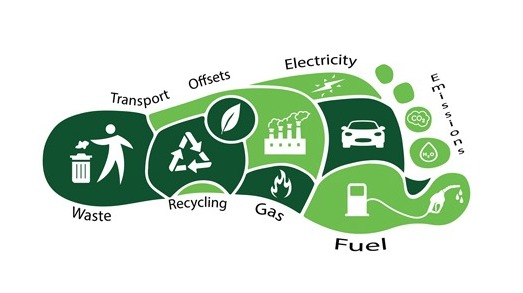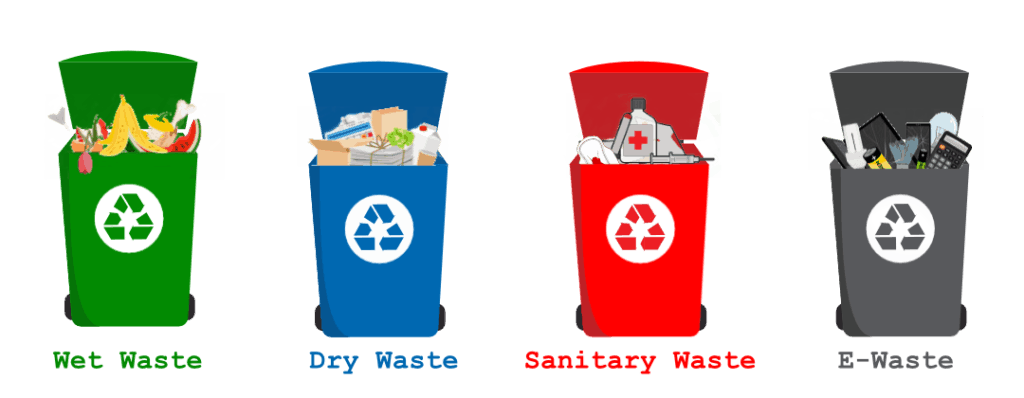Introduction
In our quest to achieve carbon neutrality and combat the growing threat of climate change, one often-overlooked aspect is our approach to solid waste management. Amid the various strategies and solutions, segregating and composting wet waste emerge as a powerful tool in striking the balance and moving towards carbon neutrality.
Understanding the Carbon Footprint of Solid Waste
Solid waste management might not be the first thing that comes to mind when discussing carbon neutrality, but it plays a crucial role. When we discard waste improperly, it decomposes in landfills and produces methane, a potent greenhouse gas that contributes to global warming. Moreover, the manufacturing, transportation, and disposal of products also generate carbon emissions. To achieve carbon neutrality, we must address these aspects of waste management. 
Segregating at Source: The First Step
The journey to carbon neutrality begins at home. Segregating waste at the source is a simple yet effective practice that can significantly reduce the carbon footprint associated with waste disposal. By separating waste into categories such as wet (organic), dry (non-organic), and hazardous, we pave the way for efficient and environmentally friendly waste management.
The Power of Composting Wet Waste
Wet waste, primarily consisting of food scraps, yard trimmings, and other organic materials, holds the key to a more sustainable future. Instead of sending it to landfills where it generates methane, composting allows us to harness its potential as a valuable resource.

Here’s how composting contributes to carbon neutrality:
- Methane Reduction: When wet waste decomposes anaerobically (without oxygen) in landfills, it produces methane. Composting, on the other hand, facilitates aerobic decomposition, significantly reducing methane emissions.
- Carbon Sequestration: Compost is rich in organic matter, and when used as a soil amendment, it improves soil health, increases its ability to store carbon, and enhances plant growth. This sequesters carbon from the atmosphere.
- Reduced Need for Synthetic Fertilizers: Compost is a natural fertilizer, reducing the reliance on energy-intensive, carbon-emitting synthetic fertilizers in agriculture.
- Less Transportation Emissions: Composting locally, “Onsite Composting” means less waste transportation, reducing the carbon emissions associated with hauling waste to landfills.
Community and Individual Actions
Carbon neutrality is a collective effort, and individuals, communities, and businesses all play a vital role in achieving this goal. Here are some practical steps you can take:
- Educate and Engage: Raise awareness about the importance of segregating and composting wet waste within our community by conducting workshops and awareness campaigns.
- Set Up Composting Systems: Encourage the installation of composting systems in homes, schools, and businesses. Provide guidance on composting best practices.
- Support Local Initiatives: Advocate for local composting programs and facilities. Support businesses that use compostable packaging.
- Reduce Food Waste: Plan meals carefully to minimize food waste. Donate surplus food to local charities or food banks.
Conclusion
Striking the balance and paving the way for carbon neutrality involves a multifaceted approach, and effective solid waste management, particularly through segregating and composting wet waste, is a crucial piece of the puzzle. By diverting organic waste from landfills, we not only reduce methane emissions but also harness the power of compost to sequester carbon and enrich our soils. It’s a win-win for the environment and our journey towards a sustainable, carbon-neutral future.
Each of us has a role to play in this mission. Together, we can make a significant impact and work towards a world where carbon neutrality is no longer a distant dream but a reality rooted in responsible waste management practices. Let’s take action today to secure a greener and more sustainable tomorrow.


